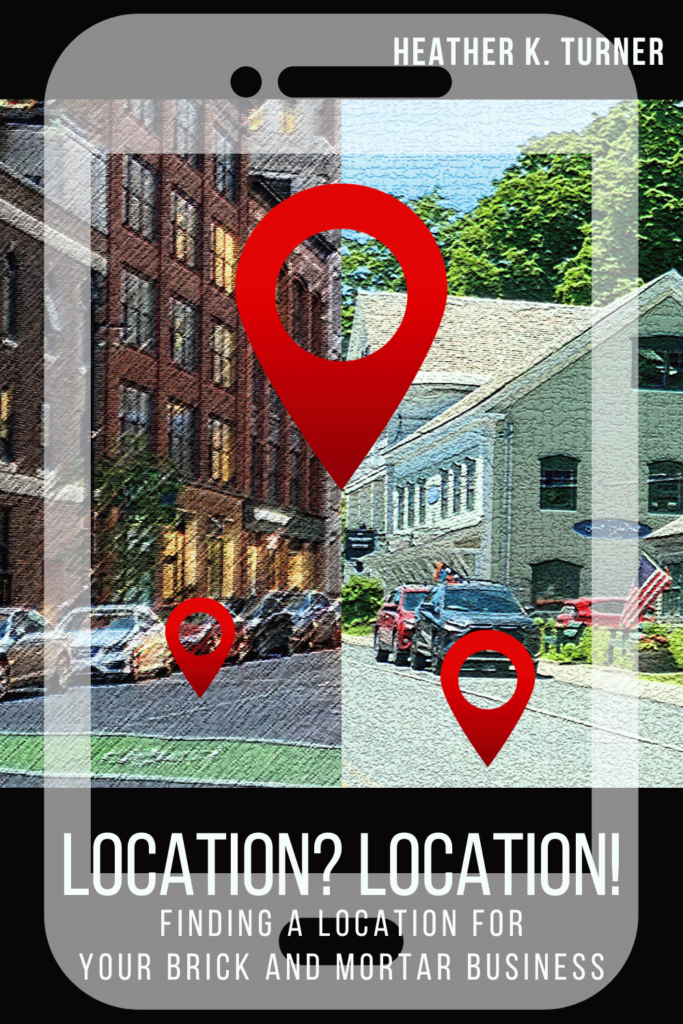by Heather T. | Jan 10, 2025 | Business, Observations, Operations, Selling a Business
Additional information on each question from 50 Questions to Ask a Business Broker When Selling a Business
 Q3. Are you a member of any professional business brokerage organizations?
Q3. Are you a member of any professional business brokerage organizations?
Why should you ask this?
Some professional affiliations that can strengthen the broker’s credibility include:
Affiliations and memberships can sometimes be found listed on the broker’s website, it doesn’t necessarily mean they are current members, so I always like to check.
I also like to see if a broker is a member of any other professional organizations, like one’s relating to an industry they might specialize in. A restaurant broker might be a vendor member, for example, of a state or national restaurant or lodging and restaurant association. Do they belong to a local Chamber of Commerce, are they involved in volunteering or any other philanthropic participation? I believe you can tell a lot about a broker from their involvement in an industry they specialize in and participation in their community.
by Heather T. | Jan 9, 2025 | Business, Observations, Operations, Selling a Business
Additional information on each question from 50 Questions to Ask a Business Broker When Selling a Business
 Q2. How long have you been a business broker?
Q2. How long have you been a business broker?
Why should you ask this?
A broker’s years of experience can show their ability to navigate challenging situations. The length of time a broker has been in the industry gives you some insight into their experience, ability to adapt to market changes, and the knowledge to help navigate complex business transactions.
An experienced broker is more likely to have encountered a wide range of situations (e.g., deals that have fallen through, tough negotiations, economic downturns, and other unexpected wrenches that might get thrown into the process) and developed strategies to handle them. (Ask them about some past experiences to get a better handle on what they have dealt with prior.)
Individuals who have many years of experience usually possess a deeper understanding of a specific industry, the proper structuring of a deal, industry buyer behaviors, and the efficient management of the entire sales process. Newer brokers may still be effective and do a terrific job for you, but they don’t have the hard experience, and in my personal opinion, a new broker can do a fantastic job if they are a real go getter, plus they are willing to be adaptable and pivot quickly if a problem or issue comes up but you need to vet them even more.
by Heather T. | Jan 8, 2025 | Business, Observations, Operations, Selling a Business
Additional information on each question from 50 Questions to Ask a Business Broker When Selling a Business
Q1. Are You a Real Estate Agent?
Why should you ask this?
If you own the property where your business operates, it’s important to choose a broker who holds a real estate license. If you are selling the property or offering a long-term lease to the buyer, your broker must hold a real estate license to properly assist with these negotiations. If not, they’ll need to work with a third-party real estate agent, or they risk violating the law.
If a third-party agent is involved, make sure that they are also experienced in handling commercial real estate transactions for owner-occupied buildings. A broker with real estate knowledge can guide you on market conditions, lease terms (if leasing), and pricing, which are important in a business sale.
Avoid using a real estate agent who only occasionally handles business sales. Business brokerage and real estate sales require different skill sets.
A real estate agent who dabbles in business sales might attempt to sell your business and list the real estate separately, which could compromise confidentiality. It’s best practices to work with a broker who specializes in both the business AND the property to ensure a seamless and confidential process.
If you would like to check the current licensing status of a broker with a real estate license you can visit the Arello Database at https://www.arello.com/search/ (free).
by Heather T. | Jan 7, 2025 | Business, Observations, Operations, Selling a Business
This is not legal advice, this is based on information gleaned from experience and pages and pages of notes from working with clients over the last 20 years who have gone through the process of selling their business, and the lessons learned from clients and assisting them in working with good business brokers and sadly, some not so good ones. Plus I promised I would do a follow up post to the blog post on Exit Strategies for Bed and Breakfasts.
Whether you choose to vet a business broker using all 50 questions or only a few, is entirely up to you. I’ve only come across articles that suggest a couple of dozen questions to ask, but the following are all ones that clients I have worked with over the years did (or should have) asked before dealing with a broker. When I started writing this article, I was going to do a quick overview/explanation for each question, but in reviewing notes added more questions (you really should ask as many as possible) and also started going more into depth on WHY you should ask each question. Around page 35, I considered maybe I should find some alternative ways to put down this information, rather than requiring readers to sift through 35 pages of text to find answers to any of the 50 following questions. So in an effort to streamline this a bit, I’ll post some follow up explanation/more detail to some of the questions each day on the blog and link back to each question. I hope it’s useful. If anyone needs all the specific questions answered prior, please reach out and I’m happy to share in advance. (no sales pitches included 🙂 )
Questions to Ask a Business Broker When Selling a Business
- Are You a Real Estate Agent?
- How long have you been a business broker?
- Are you a member of any professional business brokerage organizations?
- Do you have any credentials or certifications as a business broker?
- How many businesses have you sold in my industry?
- What’s the average size (in revenue or transaction value) of businesses you’ve sold?
- For your last sale, what was the original asking price? What was the sales price?
- What is the typical time frame for closing deals that you’ve managed?
- How long did it take you to close your last three sales?
- Can you provide references from past clients, especially in my industry?
- Do you have any case studies or success stories I can review?
- Do you have a team supporting you, or are you handling everything on your own?
- How will you determine the value of my business?
- What factors do you consider when valuing my business?
- Can you walk me through how you determine the valuation?
- How will you market my business to potential buyers?
- What types of buyers do you typically attract (strategic, financial, individual)?
- What online platforms do you use to promote listings?
- Do you have an existing network of potential buyers or sellers? Do you maintain a database of qualified buyers, or will you be reaching out to new prospects?
- What services do you provide during the due diligence process?
- How do you ensure the confidentiality of sensitive business information?
- What steps do you take to protect the identities of buyers and sellers?
- How do you maintain confidentiality during the marketing and sale process?
- What is the typical timeline for selling a business like mine?
- What are the key milestones in the sales process, and how do you handle each stage?
- How do you handle negotiations with buyers?
- What are your commission rates and fee structure?
- Are there any upfront fees?
- Do you charge a minimum fee if the sale price is lower than expected?
- How is the commission calculated (e.g., a percentage of the sale price)?
- How do you screen and qualify potential buyers?
- Will you handle initial inquiries and vet buyers before involving me?
- What information will you require from prospective buyers to ensure they are serious?
- What role do you play in managing the legal aspects of the transaction?
- Do you have relationships with attorneys, accountants, or tax advisors?
- Will you assist with drafting the Letter of Intent (LOI) and the Purchase Agreement?
- How often will you keep me informed about the sale’s progress?
- What type of reports or feedback can I expect during the process?
- Who will be my point of contact, and how accessible are you for questions?
- Do you require an exclusive listing agreement? If so,for how long?
- What happens if I find a buyer on my own during the listing period?
- What are the terms for terminating our agreement if I am not satisfied with your services?
- What role do you play in ensuring a smooth transition after the sale?
- Will you assist with any post-sale responsibilities, such as training the new owner?
- Do you provide post-sale support for the buyer?
- What are the common reasons deals fall through, and how do you mitigate those risks?
- What challenges do you foresee in selling my business, and how will you address them?
- How will you align the sale with my overall financial and personal goals?
- Can you advise on the tax implications of the sale, or recommend experts to do so?
- What are some of the documents you need from me to get started?
by Heather T. | Jan 1, 2025 | Bed and Breakfasts, Business, Food, Lodging, Marketing, Observations, Operations, restaurants
With the new year and possibly some additional challenges to the hospitality industry coming ahead, restaurants and lodging may want to think about some additional alterative ways to generate income.
I look at it this way: Plan for the Best but be Prepared for the Worst. If you are a Monty Python fan, you might recognize “No one plans for the Spanish Inquisition”. If you are not, do a little search on YouTube for the full sketch.
Many businesses don’t expect hurricanes, tornadoes, floods, earthquakes or other disasters both natural and man-made, no one could have predicted the impact Covid had, no matter what side of the fence you sit on, it had a significant impact on the economy.
Something along those lines or other (aliens could take over the world, we really don’t know what’s out there in the universe, or there could be a solar flare, sadly even more realistic) could happen but the reality is, businesses should prepare, just in case. Again, Plan for the Best but be Prepared for the Worst (as a backup plan).
I advise businesses it doesn’t matter how well your business is doing. Never stop marketing and always be prepared. When you have a power outage for a couple of days, better to have a couple of gallons of water on hand than not. Think of this as having some extra water kicking around (just as a backup) and extra money in your pocket is never a bad thing to have.
For Lodging:
Staycations have been “in” for a while, but how many lodging establishments have actually created packages for them or created a marketing plan for them?
For Rooms: (If you have 6 rooms or more (or even less) but bookings are low:
- If you have extra rooms not regularly booked, consider offering them for monthly, quarterly, or longer-term rentals. Dedicated income is never a bad thing. Medical professionals, visiting doctors and nurses are having an ongoing time finding housing and they are great short term and longer term tenants.
- Office space or Co-working space. Massage therapists always seem to be looking for space rental (also something you can use in your advertising: massage therapist on site). I saw two “asks” in local Facebook forums just in the last couple of days.
- Inventory storage space for another local business and/or climate controlled storage space for rent.
- Studio space for artists (you could tie packages into an artist in residence).
- Counselors or therapist’s rental space.
- Nonprofit office space.
For Your Dining Room/Living Room/Other Space
- Rent out space as needed to photographers/videographers who may need space for photo/video shoots.
- Offer the space for local meetings or events. If the layout and setup is conducive to having a screen and projector setup available for meetings, consider buying a projector and screen. For under $300 you can purchase both for the needs of a smaller room, and if you rent them out to meetings even for $50 or less, you can quickly make your money back. Renting out a projector from a party planning business typically costs twice that. I’d recommend if you go this route and start doing a lot of meetings adding a backup projector to the mix. You can get refurbished older projectors affordably from Ebay and Amazon. Upsell it by offering coffee, tea and other refreshments or box lunches.
- Pop up shops for local crafters or indoor farmers’ market
- Consider the old style boarding house model, room and board for monthly or longer-term renters. Finding housing is at an all time need around the country and there are probably professionals who don’t have the time or desire to cook meals for themselves, plus in need of housing. Check your local zoning laws and state laws, but if your property is already a commercial business, this may just be getting another license for an additional type of food permit. In New Hampshire, a Bed and Breakfast license is $175 per year, a restaurant license for 25-99 seats is $350 a year. You may need some additional inspections or requirements but it might be worth looking into. If you have six rooms and rent two long-term or monthly at $50 a night, that generates about $1500 a month per room, or $36,000 a year for two. Is it worth it to you to cook an extra couple of meals per day and do some extra cleaning? Even with food and some extra time for laundry, something to chew on. Just like renting to a longer term renter, you would want to be selective of who you take in, but probably less trouble than some short-term rental guests who come from an online platform.
- During the day when the space is not being used, rent it out for yoga or mediation classes (again this could be a good advertising addon for your own business)
For Both Lodging and Restaurants:
- Rent out the kitchen for commissary kitchen space (when you are not using it). There are a lot of small food producers who are looking for commercial kitchen space to use. Connect with your local SCORE chapter, SBDC, or CWE offices and let them know, so they can let clients know you have space available. In New Hampshire for example, there are less than 5 commissary kitchen spaces for use by food producers, food trucks, small chef and catering companies and other food base companies like people who make dog biscuits, but have too much volume for a home kitchen. Cottage food laws may allow a dog biscuit business to bake at home in New Hampshire, but a personal chef making meal kits must use a commercially inspected commissary kitchen or other state inspected facility. In every state, there seems to be a lot less commissary kitchen space available than what the needs of small food businesses are looking for. I run into this frequently when working with food trucks and other small food independent food providers.
- Consider co-op buying with other local food type businesses. Many decades ago, when I was a chef on Cape Cod, we did this with some other local restaurants during the slow time of year. On Cape Cod in the busy seasons, we would do several hundred covers (dinners) per night on a weekend night, during the winter sometimes we would be lucky to do a dozen covers. The choice between shopping at a grocery store to keep the restaurant going was not an option because prices are higher than wholesale, so we banded together so we could make a broadliner’s (for those new or starting in the industry, a broadliner is a larger wholesale foodservice vendor) minimum order requirements which could be $400 per minimum order. B&Bs, hotels, bakeries, restaurants, cafes and caterers, as well as smaller food service businesses (like those mentioned above) could all take advantage of co-op buying to buy in bulk and keep costs down.
For restaurants:
For restaurants I wish I had a magic wand above and beyond renting out kitchen space for additional income to deal with high food costs and the ongoing employee shortage, but here are some ideas that you could try to bring in some extra revenue and try some things that are a little different to incentivize customers to patronize your establishment.
- This differs from just renting out kitchen space, more along the lines of renting out the full restaurant during any days you are not normally open. Consider the Restaurant-as-a-Service (RaaS) for other small businesses. Rent out your full facility out to chefs or starting entrepreneurs (suggested they have business insurance and ServSafe at a minimum) to test out limited time menus or food concepts. There is no lack of people who want to start a food truck and want to test out their menus in advance, or private chefs who may want to advertise their services more. You could use this as an additional marketing tool to create buzz for your business, and tie into additional cross promotions with any small business you might partner with.
- Offer Tasting Tuesdays (or any day of the week). Beer or Wine Tastings (on your closed days) with snacks or small plate meals. Coordinate with your beverage reps to help with promotions and products.
- Beer and wine flights have been a “thing” for awhile, but what about tea or coffee flights paired with desserts or other complimentary foods, like a tea flight paired with tea smoked fish and tea smoked vegetables and/or cheeses.
- Partner with food banks or pantries to donate excess or close to code food, reinforcing your community involvement. Helping your local community and being realistic here, it’s a good advertising hook, and if donating to a 501c3, a potential tax write off. You have 2 days left on 4 gallons of milk and business is slow and you will never use it all up in time…..
- Host cultural learning dining nights, a theme might be the food of India and have some education around the menu and the ingredients, history of the dishes, and more. A server can give an overview when guests are seated, and you can provide printed handouts or QR codes on menus or tabletop stands linking to more information about each dish, its ingredients, and preparation.
A few additional things I’ve seen getting traction in bigger urban areas and a few additional ideas as well.
Incentives for bring your own takeout containers to reduce your takeout container costs (plus it’s more eco friendly and good advertising hook.
Organize some interactive dining experiences, Dining in the Dark, for instance. Many years ago, my husband and I attended a benefit dinner where you ate a 4-course meal while blindfolded. The dinner benefited a New England Guide Dog organization; the organization covered all staff and food costs, and the restaurant kept income from drinks ordered before, during, and after the dinner. Prior to the dinner there was a cash bar and light hors d’oeuvres. The event was packed with a waiting list and I have to be honest, as an attendee, it was one of the most fun dinners I’ve ever had.
A few more:
Murder Mystery Dinners, Interactive Dessert Stations (if you have never seen anyone make ice cream with liquid nitrogen, it’s a blast to watch), escape room dining (diners have to solve puzzles to get access to drinks or courses), team building dinners, roll your own California/Nori rolls (with a demonstration and people to assist if needed). Themed dinners like time travel night (food from another era) or international cuisine night. Go whole hog and do a Star Trek themed night with foods that mimic foods found in Star Trek episodes (Gagh for example is made of serpent worms (in the show), it wouldn’t be hard to make pasta with a soy-based sauce that mimics the look (but not flavor 😊) of this traditional Klingon delicacy.) If you do a little search in Google or ChatGPT for food and drinks inspired by tv shows and movies, you came up with some fun ideas you could build whole themed nights around things like Pan Galactic Gargle Blaster (Hitchhiker’s Guide) – Gin, lemonade, and a touch of absinthe or licorice liqueur, Twin Peaks Cherry Pie – A classic diner-style cherry pie with a flaky crust and Red Rum Cake (The Shining) – A rich red velvet cake with dark chocolate icing and many more.
In the coming months, I’ll try to suggest some additional revenue streams and ideas for restaurants to experiment with as well.
Happy New Year!
A Toast to the Hospitality World filled with dedicated, hardworking people who love food and the industry. May the coming year be filled with happy customers and guests, good reviews, and fresh opportunities to make a profit.
by Heather T. | Nov 19, 2024 | Bed and Breakfasts, Lodging, Marketing, Operations, Starting a Business
 I’m looking forward to being at the Midwest Inns Association Innkeeping Conference the first week of December.
I’m looking forward to being at the Midwest Inns Association Innkeeping Conference the first week of December.
In advance of that I did a new version of my marketing checklist geared specifically towards Bed and Breakfasts that I hope some people might find helpful.
This list can be a guide for aspiring innkeepers OR for innkeepers that want to up their marketing game a little and maybe explore some things they haven’t thought of or tried prior.
This is meant to be a working document for innkeepers, so you can download this list in Excel, go the file menu and then to “download”. If you use Google docs/drive, you can also make your own copy to edit it by going to the file menu and then “make a copy”.
I know I promised to do “A questions to ask a Inn Broker“, and that’s coming next. In putting together questions, I thought it would be helpful to give some more explanation behind each question and it’s been turning from a short form blog post into a bit of a novel.
by Heather T. | Oct 1, 2024 | Bed and Breakfasts, Business, Operations
 The Importance of an Exit Strategy for B&Bs
The Importance of an Exit Strategy for B&Bs
I had written this up a few years ago. The Midwest Association of Independent Inns contacted me recently, asking for information, articles and other information I might have bookmarked, specifically for Bed and Breakfasts on exit strategies, to include in their newsletter. I found this in my archives and realized I had never shared it before.
While most of this is typical advice you can find in many exit strategy guides, I included some suggestions on how you can let guests and future guests know your inn might be, or is for sale, without being blatant about it which I have not seen in most checklists.
Our blog topic for a future post will be on questions to ask a business broker before engaging them to sell your business.
- Plan well in advance, ideally years before intended sale. The best time to start preparing for a sale is when you have the energy to start putting together the information for it, even if it is for years down the road.
- Regularly assess business and lifestyle goals to ensure alignment.
- Avoid burnout and declining property value, which can significantly affect the sale price. Keeping an eye on the interest rates and the market can give you a heads-up in advance about when it’s time to sell.
- An exit strategy may change over time, so revisit periodically. An exit strategy is not just about selling, but about preparing for your next phase of life. It allows you to maximize the value of your inn or B&B, and ensures a smooth transition for you, your staff, and your guests.
Establishing Goals
- Consider plans for the property (keep in the family, sell it outright, etc.) and discuss with family members if applicable.
- Evaluate personal career/lifestyle goals, including retirement plans or new ventures.
- Assess if innkeeping still meets your needs; consider if minor changes could reinvigorate your passion. Why did you get into innkeeping in the first place?
- Think about your ideal timeline for exiting and how flexible you can be. Goals should be SMART: Specific, Measurable, Achievable, Relevant, and Time-bound. Be honest with yourself about what you want and need, as this will guide your entire exit process.
Alternatives to Selling
- Hire managers or a management company to reduce your day-to-day involvement.
- Close the business, but keep the property if you have an emotional attachment to the building.
- Family succession requires careful planning and open communication, start sooner rather than later.
- Bring in partners to share responsibilities and potentially set up future buyout.
- Manage-to-own agreements can help transition to new owners over time.
- Leasing options allow you to retain ownership while stepping back from operations.
- These alternatives can provide flexibility and may be useful if market conditions aren’t ideal for selling.
- Each option has its own legal and financial implications, so consult with professionals before deciding.
Preparing to Sell
- Get financials in order; clean and up to date books are crucial for buyer confidence and accurate valuation.
- Prepare your property by addressing deferred maintenance and enhancing curb appeal. Even small fixes and improvements can make a huge difference when showing the property.
- Consider professional inspections to identify and address issues proactively.
- Prepare yourself mentally for the emotional process of selling and transitioning. For many innkeepers, their property has not just been their business but also their home of many years.
- Preparation can take months or even years, but it’s crucial for maximizing your inn’s value. Remember, potential buyers will scrutinize every aspect of your business, so attention to detail is key.
Valuing the Inn
- Use multiple tools like Capitalization Rate, Gross Revenue Multiplier, Price Per Guest Room**
- Consider hiring an appraiser for an objective valuation, especially for unique properties
- Understand that emotional value doesn’t always translate to market value
- Be prepared to justify your asking price with data and comparables. Valuation is both an art and a science. While formulas provide a starting point, factors like location, property condition, and market trends all play a role. Be realistic but don’t undervalue your years of hard work and goodwill.
** https://calculator.academy/cost-per-occupied-room-calculator/, https://www.cloudbeds.com/tools/adr-calculator/, https://www.siteminder.com/calculate-your-occupancy-rate/, there are many more if you browse Google for ADR, ALOS, RevPAR, GOPPAR, CPOR, NOI and more.
Marketing & Advertising
- Work with an experienced inn broker on a comprehensive marketing plan. (Questions to ask a broker coming next week)
- Advertise in industry-specific publications and venues where potential buyers look.
- Carefully consider how open to be about the sale to protect current business.
- Consider advertising on social media or listing your business on niche groups where a potential buyer could be waiting as well as state and local groups. Some states have robust listserve newsletters that go out to thousands of people every day. In New Hampshire and Vermont for example there are several dozen town and area ones https://lists.vitalcommunities.org/lists/lists as well as regional ones https://vitalcommunities.org/new-uv-lists/.
- Prepare a detailed prospectus highlighting the inn’s strengths and potential.
- Effective marketing can significantly impact your sale timeline and price. A well-crafted narrative about your inn’s history, unique features, and growth potential can attract serious, qualified buyers.
- On your website, consider adding a subtle section that speaks to the future of the business: “Interested in joining our journey? Get in touch to learn more about potential opportunities to be a part of our continued story.” This can draw in people who may want to invest or inquire about ownership, without having an public or overt “for sale” message.
- Consider you may have guests that might be interested in being innkeepers. While many innkeepers are reluctant to advertise that their B&Bs are for sale because they are afraid guests might be reluctant to book, keep in mind, being open to selling and subtly putting out there you are open to offers if a good one came along has paid off for some business owners.
A few ways an innkeeper could subtly suggest a property for sale to guests.
When speaking with guests, you could emphasize exciting future opportunities for the B&B without directly mentioning a sale. “We’ve built such a strong business here, and we’re excited about the possibilities for the B&B to grow and evolve in the future.” This plants the seed that the business could be taken over by someone who shares your passion for innkeeping, without openly discussing a sale.
In conversations or marketing materials, frame the business as a “legacy” that could be carried on by someone with fresh ideas. “We’ve loved being a part of this community for years, and we’re excited to see how the next chapter for this B&B unfolds.” This approach communicates that a transition could happen, but focuses on the continuation of the guest experience rather than the sale itself.
You can present the idea of potential partnerships or expansion opportunities without saying it’s for sale. “We’ve been thinking about how someone could bring fresh energy or ideas to take this place even further.” This potentially opens the door for guests or acquaintances to inquire if they’re interested, but doesn’t sound like you’re making a direct sales pitch.
When writing newsletters or posting on social media, highlight positive guest experiences and mention how valuable and rewarding running the B&B has been. Subtly hint that it’s an ideal lifestyle for someone looking to build on what you’ve created: “We’ve loved creating memories here for guests, and this B&B has become such a beloved part of the community. We’re excited to see how it continues to bring joy to so many.” This sends the message that it’s an established, well-loved business, which could attract attention from prospective buyers who may follow up privately.
The Sale Process
- Understand regional differences in the sequence of transactions.
- Be prepared for a potentially lengthy negotiation process. Many months and some times a year plus long process.
- Consider tax implications early and consult with a tax professional.
- Explore various financing options, including potential seller financing.
- The sale process can be complex and time-consuming. Patience and flexibility are key, as is maintaining the quality of your inn operations throughout the process. Remember, the deal isn’t done until the closing documents are signed.
Transition to New Owners
- Provide detailed operations manual and hands-on training if agreed upon.
- Help with staff transition (if applicable) to maintain continuity and preserve institutional knowledge.
- Help with vendor transition (if applicable) to maintain continuity. You might have guests that love your L’Occitane or Beekman 1802 amenities. Introduce them to your sales rep to make the transition easier if they choose to continue with them.
- Introduce new owners to key community contacts to support their success.
- Be prepared for emotional challenges of letting go; consider personal counseling if needed. I’ve talked to so many innkeepers who don’t realize how much of a heartbreak it can be to sell a business (and home) that they have put their hearts into, sometimes for decades.
- A smooth transition benefits everyone: you, the new owners, your staff, and your guests. While it can be emotionally challenging, a well-managed transition can preserve your inn’s legacy and set the new owners up for success.
Key Professional Help
- Inn brokers or consultants with specific experience in hospitality properties
- Accountants familiar with hospitality businesses and related tax issues
- Lawyers experienced in business and real estate transactions
- Appraisers with hospitality industry expertise, if needed for valuation or financing. The right team of professionals can make the difference between a stressful, protracted sale and a smooth, profitable transition. Their expertise can help you navigate complex issues, avoid pitfalls, and maximize your inn’s value.
Worth a read for more information about the following links. 8 Business Valuation Calculators from Small Biz Trends.
++2 of the calculators referenced in the original article are no longer online. The article doesn’t give all of the links to the calculators so including them below.
CalcXML
https://www.calcxml.com/calculators/business-valuation
EquityNet
https://www.equitynet.com/crowdfunding-tools/business-valuation-calculator.aspx
ExitAdviser
https://exitadviser.com/mob/value-calculator
BizEx
https://www.bizex.net/business-valuation-tool
Digital Exits
https://digitalexits.com/whats-your-business-worth/
Hadley Capital
https://www.hadleycapital.com/insights/business-valuation-calculator
MassMutual Financial Group
https://www.massmutual.com/financial-wellness/calculators/business-valuation-planner
National Life
https://www.nationallife.com/Financial-Calculators-Value-of-My-Business
 Q3. Are you a member of any professional business brokerage organizations?
Q3. Are you a member of any professional business brokerage organizations?







